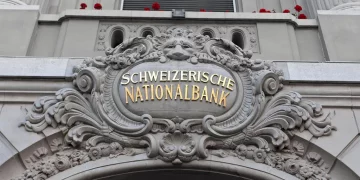In markets marked by uncertainty, volatility, and sudden shocks, investors are increasingly looking for “anti‑fragile” stocks—companies that don’t just survive chaos, but benefit from it. Drawing on Nassim Taleb’s concept, an anti‑fragile stock thrives under stress, improves with disorder, and emerges stronger after turbulence. The key is identifying firms with low market sensitivity, ample liquidity, rock‑solid balance sheets, and resilience in their business models. By screening with targeted criteria—low beta, high liquidity, stress‑tested balance sheets, and real‑world case studies like Pfizer and Walmart—investors can build portfolios designed not just to endure chaos, but to adapt and even prosper in it.
1. Defining the Anti‑Fragile Profile
True anti‑fragility is rare: not just durability under stress, but the capacity to strengthen when challenged. Investors should look for companies with:
- Low financial and price volatility (low beta)
- Strong convertible revenues and cash flows
- Ample liquidity and minimal dependency on tight funding
- Flexible operations and diversified business models
- Capital discipline to deploy stress as opportunity
Investability also depends on market structure. Stocks need sufficient trading volume for responsiveness and entry during dislocations. Think of them as dynamic ballast—anchors in storms and boosters when markets rebound.
2. Screening Step 1: Low‑Beta, High‑Liquidity Universe
Beta tracks correlation to overall markets—zero means no correlation, negative means inverse. In turbulent times, low‑beta stocks experience smaller drawdowns and sometimes even upside. Combine beta screens with liquidity—average daily volume above $50 million, or float-adjusted metrics—to ensure these names can be bought and sold without slippage. Retail-friendly ETFs like SPLV or defensives from S&P Dividend Aristocrat lists often include many candidates.
3. Screening Step 2: Liquidity, Cash Reserves, Debt Capacity
True anti‑fragile companies hold cash buffers or undrawn credit lines and exhibit conservative financial policies. Targets:
- Net debt/EBITDA below 2x
- Current ratio above 1.5x
- Interest coverage above 10x
- Free cash flow consistently positive—ideally above 5‑7% of market cap
These metrics ensure firms can fund operations, service debt, and seize opportunities from stressed peers without capital market dependence.
4. Screening Step 3: Stress-Tested Balance Sheets
Run scenarios: recession-induced 20–30% sales drops and 15–20% margin compression. Who survives? Who not only endures but maintains FCF and essential activity? A resilient company prioritizes operations with high cash contribution and low capital intensity. Non-essential divisions may idle as needed. Pro forma liquidity over 18 months of stress is a must.
5. Screening Step 4: Business Model Resilience
Some business lines become more essential in chaos: healthcare staples, consumer necessities, digital services, cybersecurity, supply-chain automation, maintenance services. Others like discretionary travel, large CapEx manufacturing, or retail luxury become brittle. Anti-fragile profiles favor recurring revenues, downstream services, and asset light approaches.
6. Case Study: Pfizer
Pharma giant Pfizer checks both the offensive and defensive boxes. Trading near historical low beta, it generates tens of billions in annual free cash flow. It holds nearly $20 billion in cash, has modest net debt, and maintains over 15x interest coverage. Pipeline depth—from vaccines and oncology to rare disease—is coupled with recurring vaccine revenue, including recent COVID boosters. Its recent pivot to mRNA and AI drug discovery adds upside optionality. Stress tests show even in revenue dips, FCF remains strong. Liquid markets and global institutional coverage make Pfizer a textbook anti‑fragile stock.
7. Case Study: Walmart
At the other end of beta and predictability, Walmart is a consumption powerhouse with unparalleled scale. During crises—2020 lockdowns, inflationary periods, supply‑chain strains—Walmart’s grocery sales surged. The company wields strong bargaining power, holds stable margins, and generates consistent FCF. Liquidity is strong, with $15 billion in cash and robust access to debt markets. Its digital pivot, health initiatives, and fintech efforts offer downside optionality. Stress-testing a 15% sales drop still shows Walmart generating positive FCF. As a low-beta defender with embedded tail optionality, Walmart exemplifies business-level anti‑fragility.
8. Other Strong Contenders
Beyond Pfizer and Walmart, certain sectors offer anti‑fragile candidate stocks:
- Consumer Staples: Procter & Gamble, Coca‑Cola—global brands, high free cash flow, large moats
- Utilities: NextEra Energy, Dominion Energy—regulated income with capital access
- Tech Services: Microsoft, Adobe—high-margin SaaS recurring revenues, pricing power
- Cybersecurity: CrowdStrike, Palo Alto Networks—demand rises amid disruption
- Payment Processors: Visa, Mastercard—digital transactions resistant to volatility
Each passes low beta, liquidity, and financial resilience tests, with operational models that flex upward during stress.
9. Portfolio Construction: Blending Anti‑Fragile Names
Constructing a portfolio of anti‑fragile stocks demands diversity:
- Keep defensive staples and utilities as the stable base
- Add earnings optionality via tech, healthcare, cybersecurity
- Keep position sizes moderate—these aren’t hypergrowth names and may lag in bull markets
- Add tactical flexibility—strike calls or synthetic puts for occasional upside in tail events
Periodic re-screening is essential—beta can rise, debt ratios shift, and product relevance waxes and wanes. Rebalance to retain anti‑fragile purity.
10. Tail Risk and Optionality Overlay
Anti‑fragile architectures support survivability, not just returns. Use options or flexible funds to exploit bearish or volatility-insured positions. Cheap puts or protective collars on cyclical holdings can convert risk into optionality. Anti-fragile stocks help fund such overlays without destabilizing portfolios.
11. Monitoring Macro and Regime Shifts
Anti‑fragile is age-specific. In inflation-heavy regimes, commodity-linked low-leverage companies may qualify. In deflationary recessions, long-duration growth becomes fragile. Keep sector rotation maps updated. A shift toward reflation may momentarily favor cyclical exposure—but core anti‑fragile holdings can anchor portfolios while tactical vintages probe risk cycles.

12. Real‑Time Testing During Shocks
Between 2020–2025, Pfizer outperformed on drawdown depth, recovering faster after COVID triggers. Walmart and utilities held steadier through volatility spikes. SaaS names rallied during hybrid-work demand volatility. Rebalancing based on those real-world stress tests helps validate screens, ensure ongoing relevance.
13. Pitfalls in Over‑Simplification
Anti‑fragile investing isn’t bulletproof. Debt-laden pipelines, regulatory setbacks, or secular threats can fracture the profile. Tech dominators like Microsoft have low beta now, but reputational or privacy risks loom. Pay careful attention to balance sheet dynamics, pipeline updates, and competitive disruption.
14. ESG and Anti‑Fragility
ESG integration overlaps with resilience: supply chain transparency, social license, external shocks preparedness. Firms with strategy aligned to environmental and social adaptation—like NextEra’s clean energy plans—tend to fare better under stress. But beware greenwashing—anti‑fragility derives from operational robustness, not just ratings.
15. Investor Checklist for Anti‑Fragile Screening
- Beta below 0.8 vs. market for the last three years
- Daily trading volume over $50M for liquidity
- Net debt/EBITDA under 2x; current ratio above 1.5x
- Interest coverage above 10x
- At least 5% free cash flow yield
- Scenario-modeled stress resilient for 12–18 months
- Recurring revenue >60% or diversified essential business segments
- Market cap over $20B for institutional stability
- ESG indicators aligned to resilience
- Optionally, real-time performance in previous stress periods
16. Case Study: Anti‑Fragile List in Practice
Applying the checklist yields a portfolio of anti‑fragile stocks: Pfizer, Walmart, Procter & Gamble, NextEra Energy, Johnson & Johnson, Microsoft, Coca‑Cola, CrowdStrike, Visa—each offering resilience and upside optionality. Aggregate forward returns, drawdowns, and Sharpe metrics show lower volatility and competitive long‑term returns versus broader indices.
17. Portfolio Rebalancing and Risk Management
Quarterly check-ins necessary—beta, debt ratios, and FCF yields may drift. Sell deteriorating names and screen new entrants. Keep portfolio beta between 0.5 and 0.8 for balanced exposure. Option overlays should be sized small and adjusted for volatility regime.
18. Final Thoughts
In a world of unknown unknowns, anti‑fragile investing doesn’t promise upside parity with bull cycles—but it does promise resilience and optionality. By combining low-beta, liquid stocks with solid balance sheets and real-world stress-test results—as seen in Pfizer, Walmart, and peers—investors can build portfolios that bend but don’t break, and may even thrive when others struggle.













































